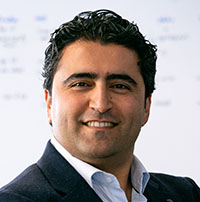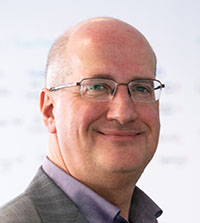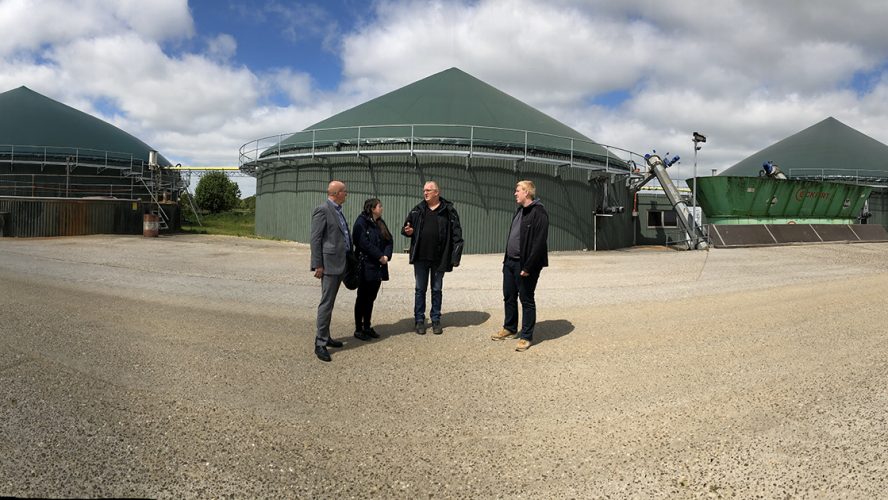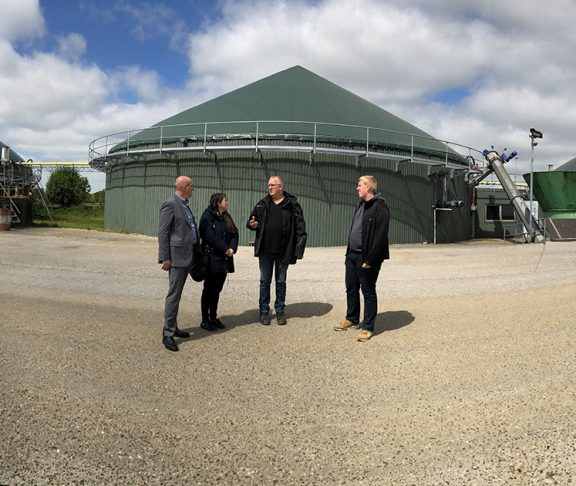
Amir Akbari
President and CEO of anessa

Robert DiDiodato
VP of Business Development at anessa
Turning manure into green energy is better than lead into gold. And, with the right software platforms, it’s a lot easier too.
Biogas is the great unsung hero of the green energy revolution. When done right, a biogas plant can turn waste by-products once considered a burden into a high potency energy source that integrates seamlessly with our existing electricity or natural gas infrastructure. Whether it’s agricultural waste, food waste, or even municipal source-separated solid or wastewater, it all becomes fuel for the biogas plant. And, not only is biogas clean and interoperable, it’s also a rich economic opportunity. It’s a triple win.
So why do we hear about it so rarely compared to technologies like wind and solar? Because biogas is relatively new in the North American context and, to be fair, a very complicated and hands on process. “There is no cookie-cutter solution here,” says Amir Akbari, President and CEO of anessa, a firm based in Canada that provides the industry’s leading Biogas Software platform. “Each project is different from the other project, so you cannot simply duplicate a project that worked before. Each feedstock or waste material has its own characteristics, and those characteristics can change daily, so you need to be able to adapt.”
The time for biogas is now
A process with that many variables can seem intimidatingly opaque to the smaller operators, often farmers and rural municipalities, best positioned to take advantage of the technology. But today’s Canadian farmers are tech-savvy, ambitious, and resourceful. If the tools exist to make a complex task approachable, they will find a way, especially if it lets them transform a regulatory headache into an income stream.
“Provinces in Canada are putting what they call diversion legislation in place, which means that you’re no longer allowed to put those organic materials into landfill sites, because the methane that gets emitted from those landfills is approximately 30 times more harmful than CO2 to the atmosphere” explains anessa VP of Business Development, Robert DiDiodato. “If you can instead convert that organic waste into energy, you turn what could be a legislative hurdle into a financial opportunity. It’s a no-brainer.”
The secret to unlocking each opportunity and taming the complexity of biogas is achieving clarity on the business case by leveraging computational intelligence. The informational storm of variables that determine the feasibility of new biogas projects–and the operational parameters of existing ones–is the natural habitat of AI-enabled software like that offered by anessa.
Feed biomass to the digester, feed data to the software
Modern analytic software can take the endless series of what-ifs that go into the planning and assessment of a biogas project and narrow them down to an easily digestible slate of reports modeling the technical and financial aspects of each project opportunity. And, once the plant is up and running, the AI can quickly simulate the twisting of all the different knobs, modeling the impact of changes before implementing them. It’s an invaluable planning tool. “A common mistake found in the industry by biogas plant operators is upsetting the bugs in the process either by not feeding the digester properly with the right ratios, or not considering the biological process conditions,” offered Mr. Akbari. “Our AI equipped technology provides peace of mind for biogas plant operators in their goal to achieve optimal performance without failing the biological processes. The industry has typically settled on stability at the expense of optimization, leaving money on the table.”
What will happen if you change from one feedstock to another? It could be fine, or it could be disastrous to the organic processes inside the biogas plant. Machine learning takes the guesswork away and confidently projects operational results across the entire spectrum of possibilities.
“Our software platform can run millions of scenarios to find the optimal solution in the planning stage of a project, and the optimal conditions at operational biogas facilities,” says Akbari. “The software has machine learning and AI algorithms built into it. It captures data from each plant and models future performance across all variables. This lets the operator make data-driven decisions to optimize for profitability.”
And that’s the heart of it. It is easy to see green energy projects as a greater good in and of themselves. But they take resources to build, they cost money to operate, and they should provide measurable benefit, both environmentally and economically.
“At the end of the day, a biogas plant is a business,” says DiDiodato. “It’s green energy, so it’s warm and fuzzy, but it’s also important to ask how much money you’re going to make, how long it will take to earn back your investment, and what level of carbon savings you can expect. You need to ask if it’s something you can do on your own or if you need neighbouring farms to join in. Those are exactly the kinds of questions our software can answer.”



